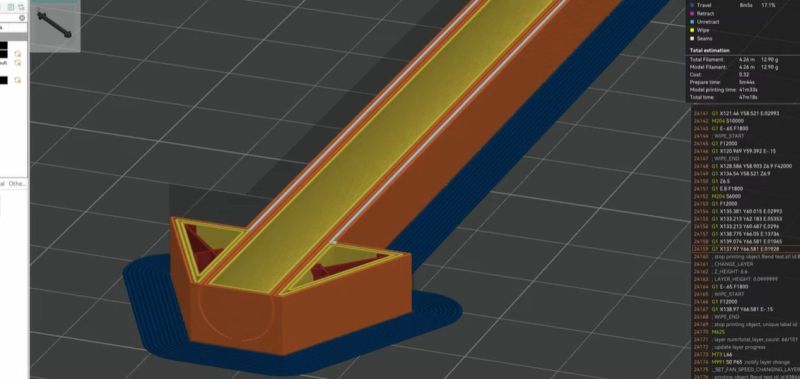When it comes to FDM 3D prints and making them stronger, most of the focus is on the outer walls and factors like their layer adhesion. However, paying some attention to the often-ignored insides of a model can make a lot of difference in its mechanical properties. Inspired by a string of [Tom Stanton] videos, [3DJake] had a poke at making TPU more resilient against breaking when stretched and PLA resistant to snapping when experiencing a lateral force.
Simply twisting the TPU part massively increased the load at which it snapped. Similarly, by removing the infill from the PLA part before replacing it with a hollow cylinder, the test part also became significantly more resilient. A very noticeable result of hollowing out the PLA part: the way that it breaks. A part with infill will basically shatter. But the hollowed-out version remained more intact, rather than ripping apart at the seams. The reason? The hollow cylinder shape is printed to add more walls inside the part. Plus cylinders are naturally more able to distribute loads.
All of this touches on load distribution and designing a component to cope with expected loads in the best way possible. It’s also the reason why finite element analysis is such a big part of the CAD world, and something which we may see more of in the world of consumer 3D printing as well in the future.
If you want stronger prints, be sure to check out brick layers. Or, consider adding a little something extra.
















It’s well known (but worth repeating) that infill contributes little to the overall strength of a part. Wall thickness is overwhelmingly the major factor.
Infill is predominantly just internal support for the overhanging layers on the top of the part.
just like structural tubing but for different reasons.
there are other design techniques that you can use to add ‘wall infill’ that’s not infill and part of the walls but no practical way to do it outside of the CAD app and in the slicer atm. you put a really thin notch cut in the wall that ends X wall widths (to match your wall count) away from the opposite edge. It’s like 0.1-0.2mm wide and this has the effect of allowing the wall path to traverse the model internally. as far as the slicer is concerned the walls aren’t touching but it is placing the walls physically close enough that they bond to each other. As I say though, not particularly practical outside of cad app but can be used to strengthen parts.
I think it highlights the issue with actual infill, where it’s not really printed as part of the model, it’s printed as an afterthought, it’s barely attached to the walls (15-30% overlap) which in itself can cause skin artifacts.
Have you got a link to a blog post / pic / video? I don’t fully understand :)